The Alotau Canoe Festival
The PNG Series > Vanimo > War Cemetery > Canoe Festival > Taxi
A case of beer, the Captain says, is the perfect inspiration. A case of dysentery, though, is...well, something else entirely.
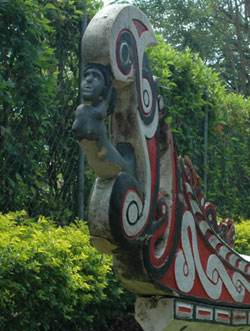 This week he's in Papua New Guinea, paddling in the Alotau Canoe Festival. Let's see if he can keep those little amoebas in check long enough to file a report...
This week he's in Papua New Guinea, paddling in the Alotau Canoe Festival. Let's see if he can keep those little amoebas in check long enough to file a report...
As John Kaniku tells it, the appropriate beginning to canoe construction is simple enough: you have to choose a tree of quality timber.
The lush, jungle-covered landscape of Papua New Guinea's Milne Bay Province, which includes strings of islands and the south-eastern section of the mainland, provides many options.
Canoe styles vary, with each region having a very distinct shape or decorative pattern - perhaps something akin to a trademark. But no matter the type, the construction procedure generally gets a little complicated after that initial selection.
"Then you have to remove the fairies, the good ones and the bad ones," says the chairman of this month's 3rd annual Alotau Canoe Festival. "You will do this by singing to them, asking them to go from your tree to another."
While he speaks, Kaniku's troops - many of whom are dressed in gray jumpsuits and culled from a local prison - are busy assembling the stalls and platforms on the festival grounds in the province's coastal city of Alotau. Saws, paint brushes, and coffee mugs fill out the chairman's work table.
"The singing is a ceremony," says the graying 58-year-old, pulling a ruffled strip of newspaper from his pocket and tearing off a small section, "that will remove the fairies, or spirits. Before you cut down the tree, there's a ceremony. After you cut it down, shape it, pull it to the village, and decorate it, there will be ceremonies."
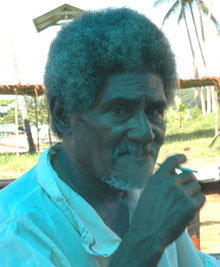 He pauses and plops a pinch of tobacco into the piece of newsprint and rolls it.
He pauses and plops a pinch of tobacco into the piece of newsprint and rolls it.
"Always," Kaniku adds, "keep the women away during the decorating because the men will be naked."
The final products of these rituals will be set in motion during the first weekend of November, a bustling three days of races, traditional food, and dancing to the rhythms of skin drums. But Kaniku sees the spectacle in a broader sense: it is an opportunity to educate the nation's youth about a traditional art form and simultaneously showcase the area in a positive sense, one that can be seen as a tourist destination.
The roughly 70 canoes will arrive at the grounds on the edge of glassy Sanderson Bay in full splendor, ready to be raced across its mouth and back.
The Wala Sailau canoe sports a deck and hails from the chain of islands that make up the Louisiade Archipelago to the south. Known for their large, tarpaulin sails, these dugouts use small keels for cruising in shallow waters and outriggers to ensure stability.
Also unfurling a sail is the non-decked Rabaraba Kukakuka. This grand, yacht-type vessel measures approximately 50 feet in length and originates from Goodenough Bay, north of Alotau.
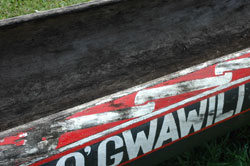 The Kula Ring canoe is known for its colorful patterns adorning its bow and the trade it has traditionally undertaken in polished red shells and pigs within the D'Entrecasteaux Islands, which are just outside the next bay north from Alotau.
The Kula Ring canoe is known for its colorful patterns adorning its bow and the trade it has traditionally undertaken in polished red shells and pigs within the D'Entrecasteaux Islands, which are just outside the next bay north from Alotau.
Canoes are not an anachronism in PNG. In addition to providing transportation between islands, they still function as a key means in the trade of copra (desiccated coconut), cocoa, and marine products.
Because canoe construction requires so many rituals, which includes a one-month fast on the part of the paddlers just prior to the craft's launch, the entire process could take 6 months. The nuts-and-bolts carving and decorating, however, might span a mere 3 weeks.
Such dedication, Kaniku says, is fleeting among young people today. Not only is he eager to reinstitute the art of canoe building, but he would like people to get in touch with where they came from.
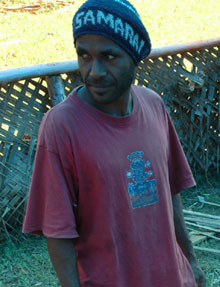 "All of the canoes," he says, "somehow contain the image of the womb." This might include something like a figurehead carving of a woman on the bow.
"All of the canoes," he says, "somehow contain the image of the womb." This might include something like a figurehead carving of a woman on the bow.
The Tawala war canoe, originating from many of the villages within Milne Bay itself, is simpler than the others, relying solely on the strength of its more than 20 paddlers for forward motion.
They are the crowd favorites. The hulls are embellished in cartoon-like aviary and marine imagery, with the rim perhaps lined with feathers.
For hundreds of years, war canoes were key elements in tribal fighting that often included ritual cannibalism - a practice that gave PNG an international reputation that Kaniku hopes to dispel.
"Cannibalism is associated with war," he argues. "Otherwise people don't go just killing for the sake of protein. It is a ritual."
Cannibalism was seen as a way of shielding a warrior from a dead enemy's spirit and subsequently harnessing that power for the warrior's own emboldening.
Though cannibal activities are documented in PNG well into the last century, the arrival of Christian missionaries in the 19th century is generally credited with substantially reducing the practice.
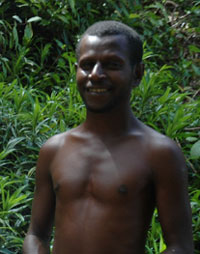 But in September, a British Tory party spokesman, Boris Johnson, apologized for the contents of an article he wrote for The Daily Telegraph.
But in September, a British Tory party spokesman, Boris Johnson, apologized for the contents of an article he wrote for The Daily Telegraph.
"For 10 years," he wrote, "we in the Tory party have become used to Papua New Guinea-style orgies of cannibalism and chief-killing, and so it is with a happy amazement that we watch as the madness engulfs the Labour Party."
Kaniku is frustrated that word of past rituals still lingers today.
"Even Papua New Guineans," he says, "boast of their fathers eating human flesh, but that is just pride. When you go to question them, they don't know when and where."
Kaniku would like people to recognize the value of their culture. He thinks that a festival in which people can proactively participate will be a means of interfacing culture with tourism, with each supporting the other.
Between 2001 and 2005, PNG averaged slightly more than 50,000 tourist arrivals - one-tenth that of Fiji and half that of New Caledonia and Samoa.
Those who do enter PNG are likely to be headed to one of its bucolic coastlines for diving or venturing into the mountains to visit former World War II battlegrounds. (While the Kokoda Trail, where Japanese troops waged a vicious campaign against Australian and New Guinean troops, is perhaps the most famous site, the area around Alotau saw Allied troops turn away Japanese advances in two key battles.)
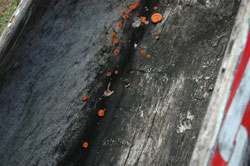 PNG's general lack of law and order, little modern tourist infrastructure, and single international point of entry (at the capital Port Moresby) are major tourist drawbacks. Kaniku, however, remains unbowed; he believes that PNG can be a true experience for the ambitious traveler.
PNG's general lack of law and order, little modern tourist infrastructure, and single international point of entry (at the capital Port Moresby) are major tourist drawbacks. Kaniku, however, remains unbowed; he believes that PNG can be a true experience for the ambitious traveler.
"We want tourists to come to the villages," he explains. "We want tourists to go see the real Milne Bay."
With the Milne Bay Tourism Bureau and the National Cultural Commission as support, the festival allows a peek into village life.
As paddlers, in grass skirts and colorful face paint, approach the festival grounds in the return leg of the races, they chant as they head to the shore. Any bad spirits loitering in the area are held in check through a welcoming of vegetables and fruit bestowed by their families and friends.
Kaniku, a Fulbright scholar who graduated from the University of Mississippi, is an author and former instructor at the University of Papua New Guinea in Port Moresby.
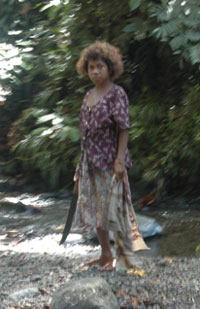 He resigned his post in the mid-'80s after he concluded that the university's curriculum did not contain what he thought was the real history of PNG.
He resigned his post in the mid-'80s after he concluded that the university's curriculum did not contain what he thought was the real history of PNG.
Now working on a number of books, including one on canoes and another on culture, Kaniku respects the spiritual element within canoe construction, but feels that spirituality in certain ways has become overly intertwined within everyday life.
"The village people believe in witchcraft," he says, placing another rolled newspaper smoke between his darkened teeth. "We are born into that belief. Any sickness, we blame on witchcraft. Any success or failure we credit to witchcraft. People have to open their mind."
"Tears Shouldn't Be," a theater play written by Kaniku, tackles the subject head on. It is the story of an Alotau girl who travels to Port Moresby and contracts HIV while working as a prostitute.
Kaniku hopes that the Christianity-themed play, which was performed a single time, is able to teach responsibility.
Rather than magic, Kaniku is a firm believer in getting in touch with the soul within the canoe.
"It is our association with the land," he says. "The tree is a child of mother earth."
Note: The Alotau Canoe Festival runs from November 3rd through 5th.
The PNG Series > Vanimo > War Cemetery > Canoe Festival > Taxi

